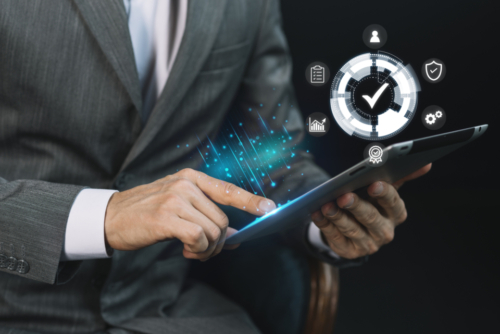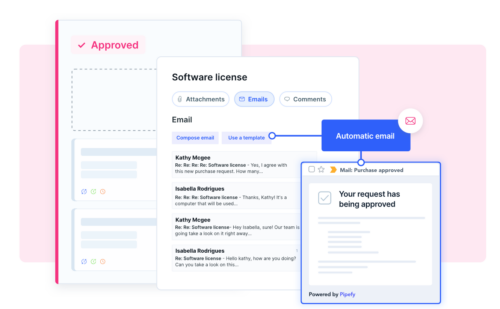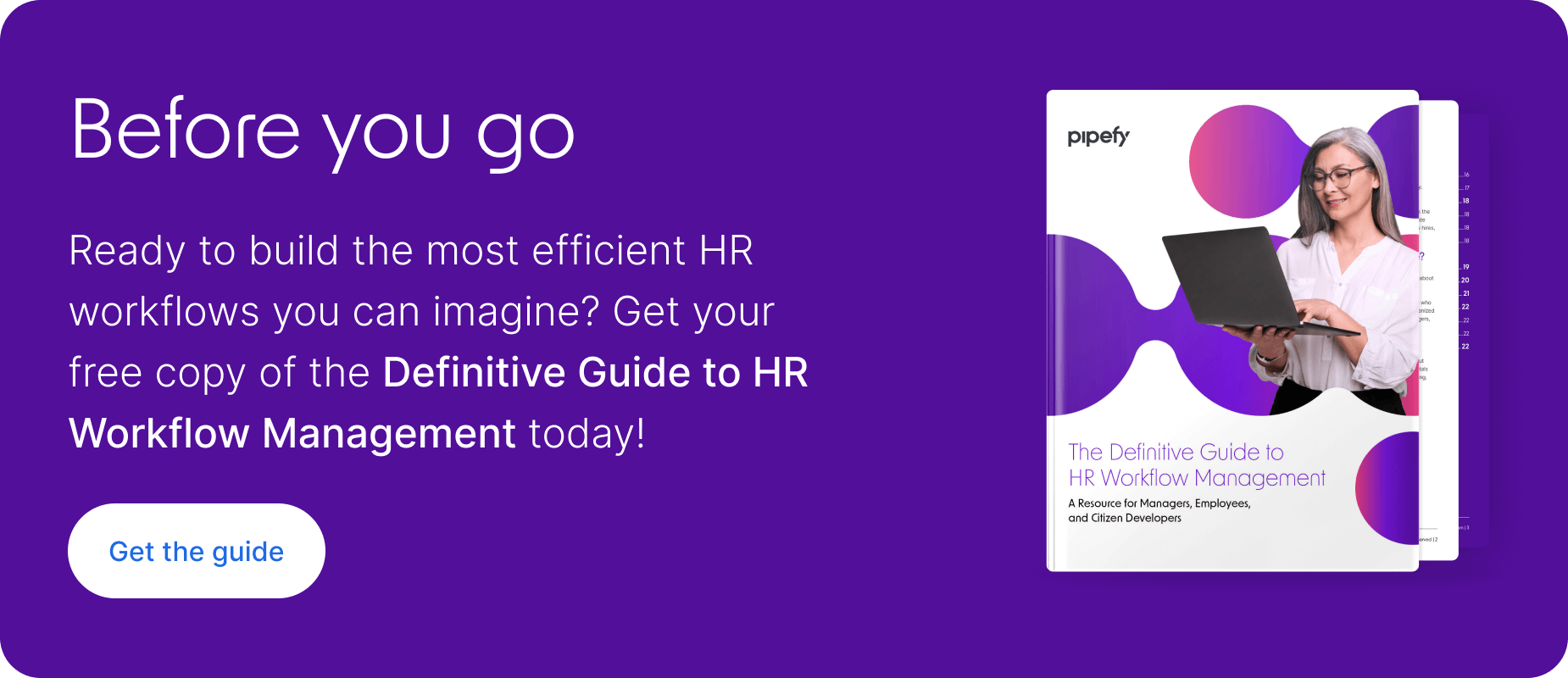
One-hundred million people use ChatGPT each week, according to Open AI, via the Verge. While generative AI has sparked overall business interest, a Gartner, Inc. survey from 2023 revealed that the widespread usage of ChatGPT for HR functions is still on the horizon.
Just 5% of the human resources (HR) leaders interviewed by Gartner reported generative AI implementation and use, while another 9% were conducting pilot programs. At the same time, “more than half of HR leaders surveyed by Gartner said they are currently exploring how they can use generative AI with nothing in place yet,” according to Dion Love, Advisory Vice President for Gartner HR.
Although generative AI has yet to widely permeate daily HR routines, most HR departments are preparing for its use in the short and/or mid-term. Teams who have trained to use AI platforms in business contexts are far better positioned to take the lead over competitors when the technology becomes available.
In today’s unpredictable market, no organization can afford to fall behind the competition. Keep reading to discover how ChatGPT works within HR operations, ChatGPT HR use cases, and the impact experts foresee it making on HR jobs.
How can ChatGPT be used for HR?
ChatGPT can assist HR teams in various ways, releasing employees from manual tasks and error-prone functions. The tool can streamline HR processes, acting as an assistant or intern when organizing and filtering information and providing automated insights thereon.
HR teams typically leverage ChatGPT’s capabilities to reduce the routine daily work they must tackle, such as finding great candidates, providing answers to employees, scheduling meetings, and analyzing data. When ChatGPT is fully implemented and in use, HR professionals can depend upon it to accelerate process execution and redirect team members’ labor to strategic tasks.
Find how can AI revolutionize HR employee service in our brand new guide
Benefits of ChatGPT for HR
ChatGPT enhances HR teams’ operations in many more ways than you may anticipate – here are a few examples:
- Information retrieval: ChatGPT helps provide information in real-time on HR policies, procedures, benefits, and much more.
- Employee support: The AI tool assists by answering frequently asked questions (FAQs) from employees, improving both accessibility and response times to common HR queries.
- HR team efficiency: By handling routine queries and providing information to employees without human intervention, ChatGPT allows HR professionals to focus on more complex tasks, strategic decision-making, and meaningful personal interactions that require human expertise.
- Optimized communication: ChatGPT can ensure consistent, accurate communication when creating error-free job descriptions, emails to candidates, communications to employees, and more, reducing the likelihood of misunderstandings, confusion, and inconsistent messaging.
- Scalability: ChatGPT’s natural language processing and machine learning functions can search for solutions to large volumes of queries simultaneously, giving your business’ HR processes the agility to quickly scale when necessary.
- 24/7 availability: ChatGPT provides employees with access to HR-related information around the clock, an invaluable feature for global offices and remote teams located across multiple time zones.
- Enhanced employee experiences: ChatGPT contributes to an improved overall employee experience by offering quick and accurate responses to queries, fostering a perception of agility in HR services and validation of employees’ issues. This establishes a culture of trust.
- Cost-effectiveness: Automating routine HR queries through ChatGPT is a cost-effective solution, freeing human resources for more strategic and complex tasks.
Top 9 Use Cases and Examples of ChatGPT in HR
HR departments are only beginning to understand ChatGPT’s capacity for solving multiple bottlenecks while boosting process efficiency and scalability without the need to increase HR headcount. Below, you’ll find the main HR use cases for which ChatGPT can play an essential role as an HR virtual assistant.
Recruitment
ChatGPT technology is used to conduct initial screenings of job applicants, asking basic questions about their qualifications and experience. It can also answer frequently asked questions from candidates, providing information about the recruitment process, company culture, benefits, and more.
HR professionals can rely on AI to identify potential candidates according to predefined filters and terms such as skills, experience, and education. Using the same data, AI has the capacity to craft detailed, customized job descriptions.
When it comes to recruiting, Bryan Hancock, global leader of McKinsey’s talent segment, states in a McKinsey podcast episode that Chat GPT can be leveraged to increase personalization. “Right now, if you’re an organization with tens of thousands of applicants, you may or may not have super customized ways of reaching out to the people who have applied”, he argues. “With generative AI, you can include much more personalization about the candidate, the job, and what other jobs may be available if there’s a reason the applicant isn’t a fit”.
Employee Onboarding
HR teams can use ChatGPT to inform new employees about company policies, procedures, and resources during onboarding. The tool can also assist in training process by answering common queries and providing additional information to help new employees get up to speed.
HR departments can use ChatGPT to perform administrative tasks such as preparing and optimizing onboarding classes or sending new hires reminders of pending training sessions. These simple tasks can save significant time for HR employees, eliminating their need to write and send emails requesters or clarify information.
HR helpdesk
ChatGPT enables a virtual HR helpdesk, giving employees a place to ask questions about company policies and benefits. Generative AI also allows employees to submit requests and check their status through a chat interface.
Feedback
ChatGPT is an effective means to distribute surveys, allowing HR teams to collect employee feedback on performance appraisals, projects, working conditions, and more in an anonymous environment. What’s more, it can analyze results and suggest practical improvements based on data findings.
Learning and development
Training and learning sessions are excellent opportunities to witness ChatGPT in action. Generative AI empowers employees with easy access to the resources and training materials they need for skill and knowledge development, as well as by distributing workshop information to specific employees.
In addition, all manual tasks related to learning and development can be automated with AI, including scheduling training sessions and providing reminders to employees about upcoming events. ChatGPT can even develop customized learning paths for each team member based on their skills, career plan, and company needs.
Conflict resolution
ChatGPT can function as a virtual mediation platform through which employees feel comfortable enough to express concerns about conflicts. They can vent emotions before HR sessions to receive guidance for tactfully expressing worries. HR professionals can also preemptively consult AI-powered chatbots to get ideas for compromises and resolutions while maintaining a calm, diffused environment.
Employee engagement
ChatGPT is a powerful tool for increasing employee engagement. Employees feel satisfied and appreciated not only when they have real-time support and personalized assistance, but also by receiving important company communications in a timely fashion. They often need fast access to information and, just like external customers, prompt request resolutions.
Compliance
Generative AI can be leveraged to help employees understand and adhere to legal and ethical guidelines, as well as local, state, and federal regulations. It is critical for any organization to avoid legal risks, so resolving compliance-related issues quickly and thoroughly is important.
Additionally, ChatGPT can track and monitor employee compliance with internal HR policies, such as attendance, leave requests, and work schedules, quickly alerting them and their managers of any discrepancies.
People analytics
Many businesses perform people analytics initiatives via ChatGPT to improve the overall employee experience. When it comes to employee attrition, for example, HR can check in with ChatGPT to get an analysis of historical data for pattern recognition, looking for insights into specific managers and projects, survey responses, and exit interviews.
Diversity and inclusion benefit immensely from ChatGPT, which can analyze language patterns, identify potential bias in communication, and provide insights to promote a more inclusive workplace.
Will ChatGPT replace HR jobs?
According to a Goldman Sachs estimate, “roughly two-thirds of U.S. occupations are exposed to some degree of automation by AI.” They also predict that, of those occupations exposed, “roughly a quarter to as much as half of their workload could be replaced.”
However, researchers and experts are quick to point out that this doesn’t lead directly to layoffs. “Jobs displaced by automation have historically been offset by the creation of new jobs, and the emergence of new occupations following technological innovations accounts for the vast majority of long-run employment growth,” points out the Goldman Sachs report.
To Zachary Chertok, an HRE workforce research analyst with IDC, ChatGPT will likely help HR teams reduce tasks, accelerate work and improve efficiency without necessarily “stealing HR jobs.” However, when reducing the amount of functions per HR role, the technology may slightly reduce the size of HR teams.
The key difference? Roles are expected to shift. “They may take on more dynamic responsibilities, depending on their skills and position,” Chertok says. “Any time you have a broadening of skills, competencies or responsibilities in one role, it diminishes the need for added headcount overall because one FTE can do more.”
ChatGPT, therefore, can be a valuable tool in HR, but, while it reduces some manual HR tasks, it will not fully replace human interaction; HR teams will instead leverage it as one valuable tool among many. Human oversight is crucial to ensure that the AI actions align with company values, policies, legal requirements, and ultimately to design an AI usage strategy.
Ideally, ChatGPT should partner with HR professionals to release them from repetitive, less creative tasks. In this sense, the scope of human work is changing rather than disappearing from human resources departments.
ChatGPT limitations
While ChatGPT can be a valuable tool for various applications within HR departments, there are limitations to keep in mind, including
- Lack of real-time updates: ChatGPT’s current free version (3.5) pulls from a knowledge database from January 2022. It cannot provide real-time information or updates, which means users should always verify results using authoritative sources.
- Potential for bias: When the data for ChatGPT contains biases, the model may inadvertently reflect them with biased or inappropriate responses. It’s essential to be aware of this and use the tool cautiously, especially in sensitive HR-related discussions.
- Security concerns: Using a tool like ChatGPT for HR purposes involves sharing potentially sensitive information. It’s crucial to consider data security and ensure that any platform or application using ChatGPT complies with data protection regulations.
- Interpretation errors: ChatGPT is sometimes known to misunderstand context and yield incorrect or ambiguous responses. This can be a concern in HR contexts where precision and clarity are crucial.
- Limited customization: Users can fine-tune models to some extent, but there are limits to ChatGPT’s capacity to be customized for specific HR needs. It may only partially align with some organizations’ specific processes and terminologies.
- Dependency on quality of prompts: The quality of responses heavily depends on the clarity and specificity of the input. Ambiguous or poorly phrased queries may result in inaccurate or irrelevant responses.
Other ways HR can use AI
HR can benefit from AI beyond ChatGPT. Several world-class HR service delivery systems offer AI capabilities, allowing teams to combine the acute efficiency of process automation with the power, speed, and agility of artificial intelligence features.
Pipefy AI is a business process automation (BPA) software platform with AI capabilities that improves employee experiences by providing personalized HR assistance. Your employees simply tell Pipefy AI what they need, and the answers appear in seconds.
In addition to resolving employees’ issues, Pipefy AI allows HR professionals to create workflows in minutes or less – building and customizing the workflows, collecting process insights, and transforming HR into a data-driven, strategic department.






